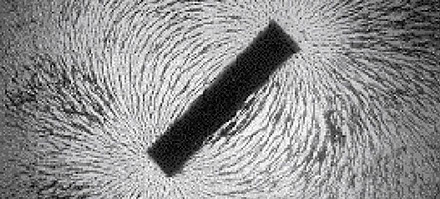
Wk 1: Logging Like an Inventor

“Logging Like an Inventor” is a lesson designed to guide students to make more detailed observations, to include questions, to evaluate efforts, and to propose future work in their science notebooks or logs. In this lesson, students will learn how to log their work on the invention that they are designing as a part of “Invention Convention.” “Invention Convention” is an integrated project combining learning from language arts, science, and math curriculums allowing students to apply their understandings of magnets and electricity by designing or improving an existing invention.
- Grade 4, English Language Arts, Goal 4, Objective 4.07
- http://kfp.localhost.com/kenanfellows/themes/garland/images/menu-leaf...); background-repeat: no-repeat; background-attachment: initial; -webkit-background-clip: initial; -webkit-background-origin: initial; background-color: transparent; background-position: 1px 0.35em; ">The learner will understand that sketches, questions, daily work, future proposals, and evaluations are a part of a log entry.
- http://kfp.localhost.com/kenanfellows/themes/garland/images/menu-leaf...); background-repeat: no-repeat; background-attachment: initial; -webkit-background-clip: initial; -webkit-background-origin: initial; background-color: transparent; background-position: 1px 0.35em; ">The learner will develop a rubric to use with each log entry.
Must Haves:
- Date
- Title
- Detailed Sketch with labels
- What I did today or this week.
Choose at least two:
- Question
- Plan for next time
- Concern
- Step by Step Instructions
- Plans for Improvement
- The teacher will informally observe as students are reading and analyzing the Library of Congress website about Bell. Each student should be able to locate at least three different types of information.
This lesson requires one hour of class time, but could be split into two, thirty-minute sessions.
- Notebook paper / pencil for each student
- Chart paper / marker
- To open the activity, the teacher could ask, “Does anyone know who Alexander Graham Bell is?” Or, the teacher may want to have an “old fashioned phone available – possibly one with a cord or a rotary dial (check Kindergarten / First Grade Kitchen centers.) Ultimately, students need to understand that Bell was an inventor, famous for inventing the telephone, but also famous for other inventions as well.
- The teacher will explain that one of the ways that we know so much about Bell and his investigations is by examining his science notebook. The teacher can also share that this is non-fiction, informational reading.
- Using information below, the teacher will share, ”Today, you are going to explore a website sharing lots of information about Bell. Initially, you are going to explore Bell’s science notebook. At the end, there may be time for you to explore some other parts as well. While you’re exploring, make a list of all the different types of information that Bell includes in his notebook.
- Teachers may want to highlight with students how to change the page or click on the jpeg link to enlarge, but most students have no problem figuring out how to manipulate this webpage.
- Allow students 15 – 20 minutes to work. Circulate, drawing students’ attention to elements of the science notebook they may trivialize or overlook.
- (7 minutes) Have students meet as a whole group for discussion. Have them share all the different types of information they could find. A teacher or student will record this information on the chart. The list may include: date, sketch, title, labels, list of what he did that day, step by step instructions, questions, concerns, plans for improvement, ideas for what to do tomorrow, etc.
- (10 minutes) After creating the whole group list, tell students that it is now their job to figure out “why” Bell included this information in his science notebook. The teacher will show students how to create a “T” chart with “Information” on the left and “Why to Include” on the right. Students will spend ten minutes working in partners to determine why each piece of information is important.
- After working in partners, students will share their reasons for including a variety of information in a log entry.
- (10 minutes) The teacher will share, “Now, we are going to make a rubric of information to help us know what to include in our log entries.” Together the students and the teacher will create a rubric that could look like the one below: The teacher will provide each student with a copy or will display the one created so students can refer to the expectations for “quality” log entries while they are working.
- While exploring the website, ELLs should be directed to glean information that is non verbal including important words found in labels, date, time, and sketches. This information is just as important in a science notebook as written information.
- When creating the rubric for log entries, ELLs could work with the teacher separately or with an assistant to create a modified Entry Log Form. Below is an example. Click on the link for a Microsoft Word Version.
Link to ELL modified Entry Log Log Entry ______ Date ____________________ Here is an illustration of my work today. Today I . . . . . First, I ________________________________________________________. Then, I _______________________________________________________. Next, I ________________________________________________________. Last, I ________________________________________________________. Tomorrow, I will ________________________________________________. Question (Pick one) Why does ____________________________________________________? How can I ____________________________________________________? What if I _____________________________________________________?
- Students will each need access to a computer with internet. If this is unavailable, students could work at computers in partners. Or, with an LCD projector, the students could do this activity as a whole class with teacher facilitation.


To find the specific science notebook entry from the home page, follow these steps.
It is important for students to understand the importance of writing quality log entries. Teachers should set expectations high and offer immediate feedback when students actually write their first log entry.